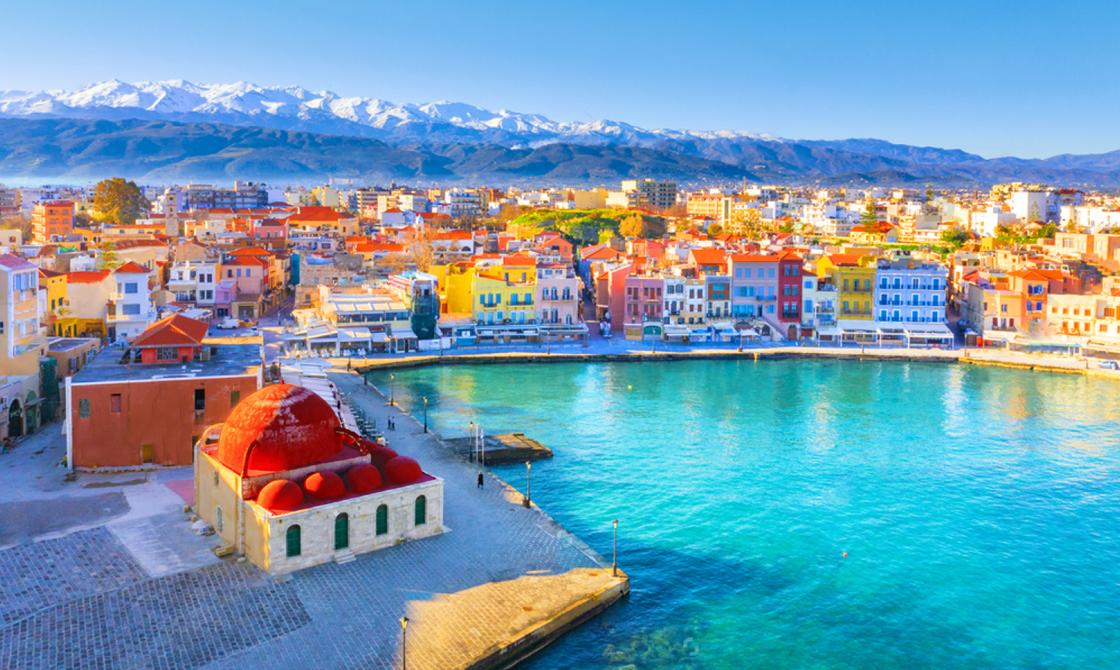
Chania
Chania town
Chania is the most beautiful city in Greece, a characterization that has not been given to it by chance. Beautiful Chania is the second largest city of Crete after Heraklion, with more than 60,000 inhabitants. The Old Town and the Old Venetian Port have remained almost intact, giving the city a special Venetian character. Thus, the visitors of the city are enchanted by its beauty, the narrow alleys that travel you to other times, the Egyptian Lighthouse at the entrance of the small port and all the unique elements that make up the insurmountable magic of Chania. Chania is built on the site of the Minoan Kydonia, as the excavations on Kasteli hill have shown.
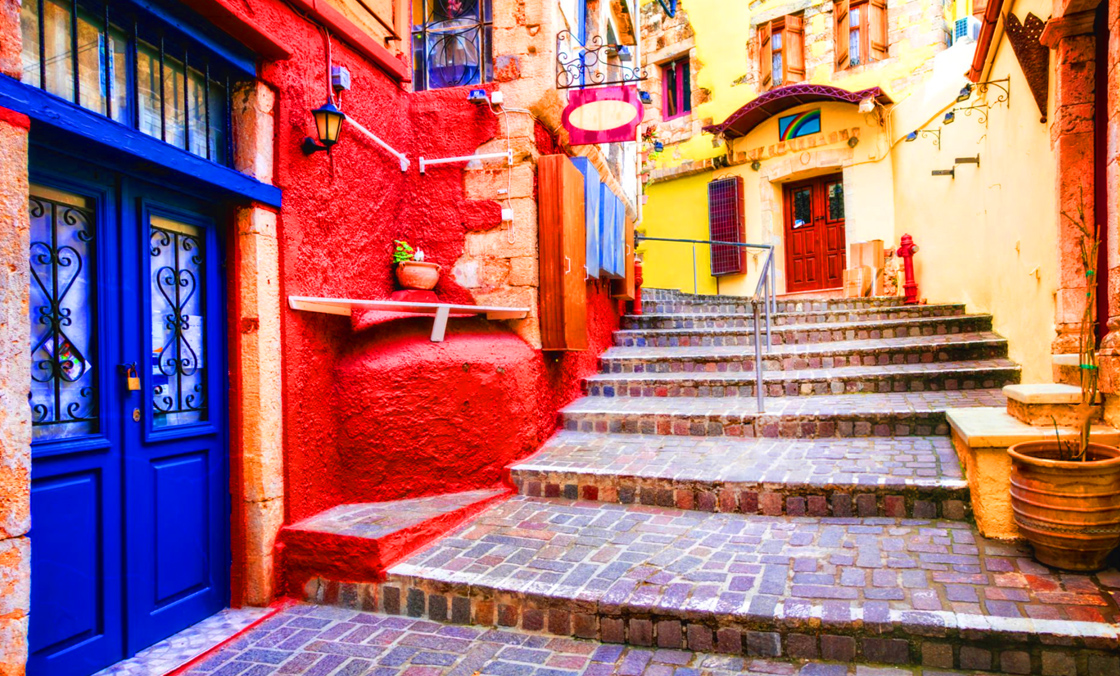
Chania actually developed after the Byzantine Era, when it was fortified with a wall. Later, under the Venetian rule, the city was transformed into a large castle. Eleftherios Venizelos, the greatest political personality of modern Greece, who with his successful policy as Prime Minister of Greece managed to triple the territory of Greece at the beginning of the 20th century, came from Chania. The tombs of the Venizelos family are located in an enchanting spot east of Chania, with a panoramic view of the city.
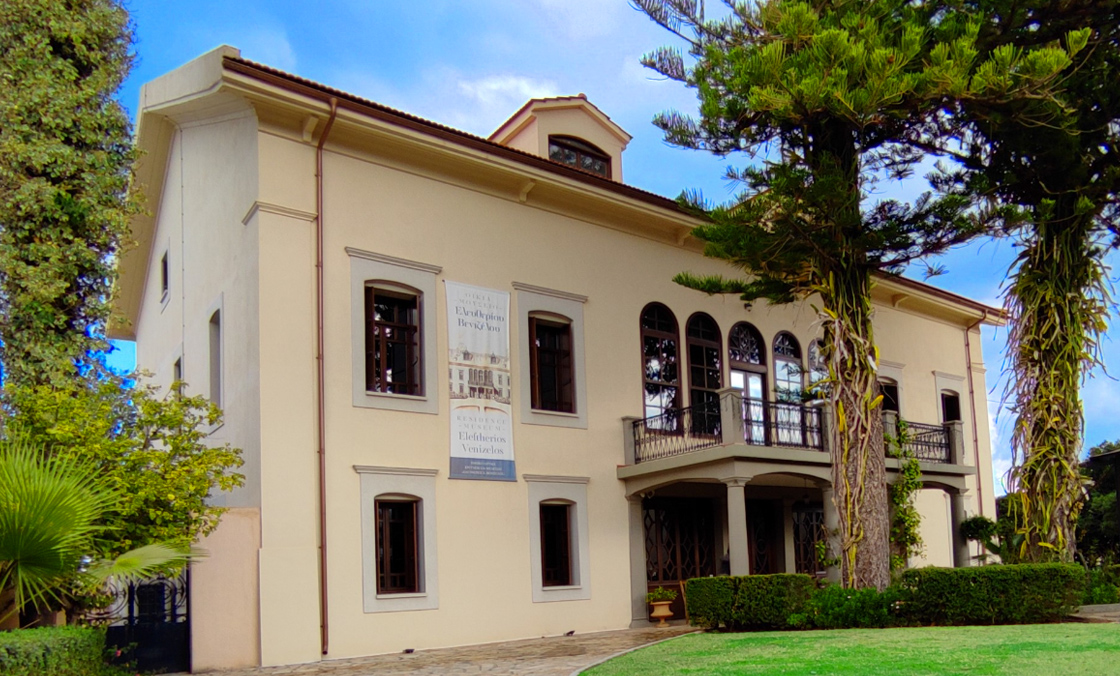
Sights of Chania are the Old Town, the Venetian Port with the Egyptian Lighthouse, the Mosque of Kyuchuk Hasan, the pedestrian street of Koum Kapi, the hill of Kastelli with the old palace and the Minoan settlement, the Metropolis, the Archeological Museum of Chania, the beach of Nea Chora, the Maritime Museum of Crete at the Firka Fortress, the Prefecture and the Courts, the Tombs of the Venizelos, the house of Eleftherios Venizelos in Halepa, the Historical Archive of Crete, etc.
Visit the old town
Although it was bombed and burned several times in its long history, the old town of Chania is considered to be one of the most beautiful cities in the Mediterranean. In the picturesque alleys with the beautiful shops the traveler can meet examples of all the cultures that passed through Crete. The part of Chania that is inside the Venetian Walls is considered as the old city.
Visit the Venetian Port of Chania
The Venetian Port of Chania with the Egyptian Lighthouse is the largest of the other two ports of the same era, Heraklion and Rethymno. A walk in it is one of the most beautiful experiences in Chania, as the whole area combined with the Old Town is a living Venetian monument. During the Venetian and Turkish rule, Chania had a fairly developed trade and shipping. Not only the import, but also the export of products and various articles was remarkable.
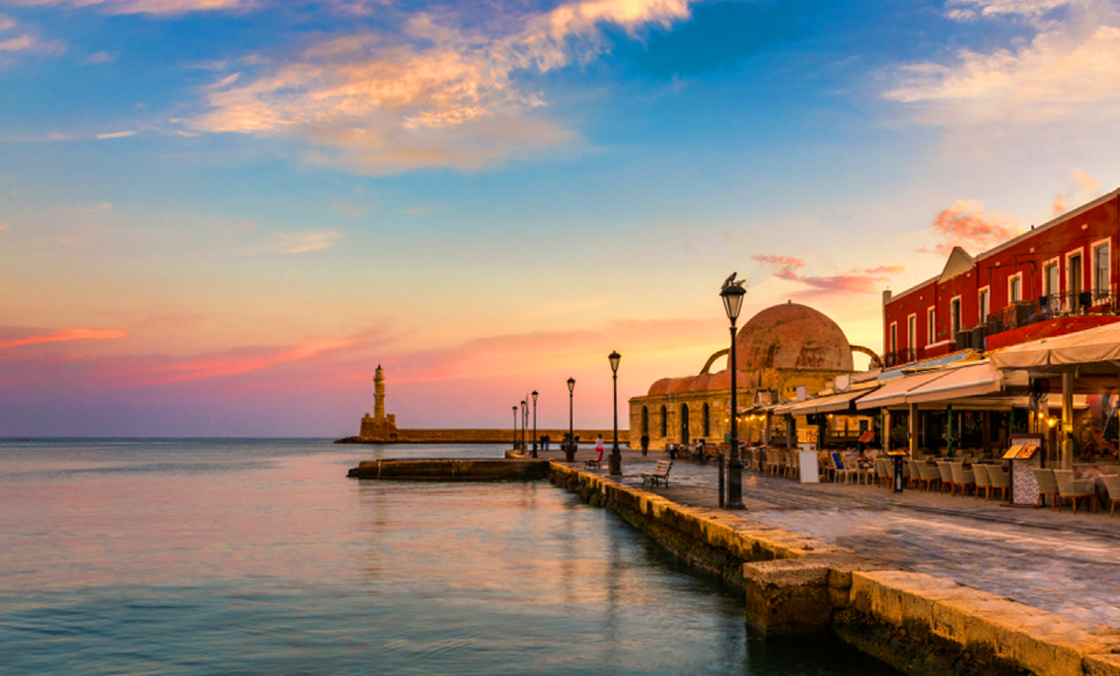
The natural port of Souda actually served relevant needs quite sufficiently. With the capture of the city by the Genoese, the need to create a port was once again confirmed and thus the local authorities were obliged to start actions for its construction. During the Venetian rule, in 1302, the matter was put to the government by Rector Marino Gradenigo, which accepted the proposal.
Visit the tombs of Venizelos
The Tombs of Venizelos are located in a historical location of Chania, next to the Venetian temple of the Prophet Ilias in the location of Froudia. Eleftherios Venizelos and his son Sophocles Venizelos, later Prime Minister of Greece, are buried in the landscaped area next to the church.
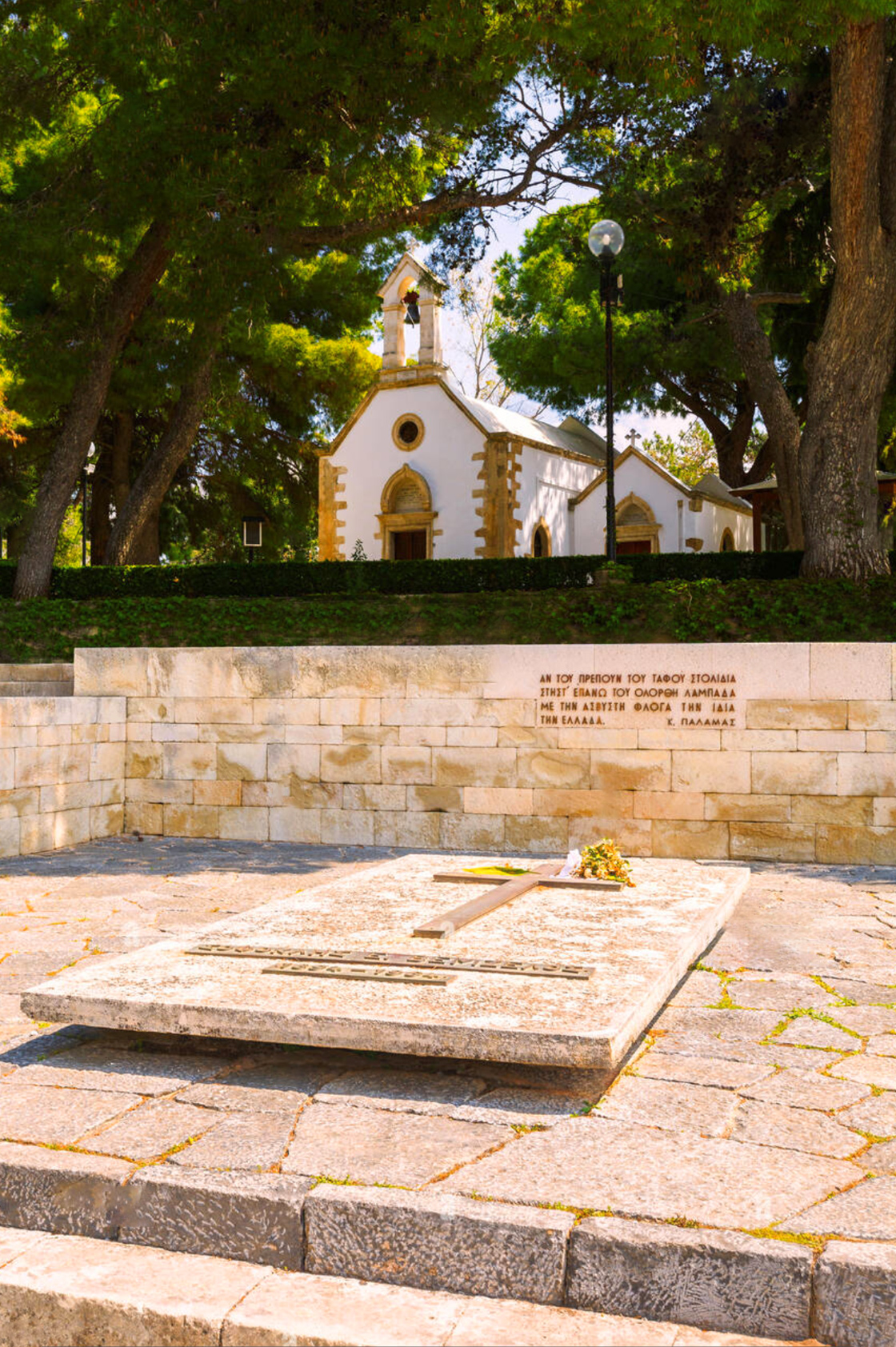
Georgioupoli village
Georgioupoli is a tourist resort located 38km east of Chania and 21km west of Rethymnon. It is a small seaside town, built in a green plain, full of rivers and springs. Characteristic of the village is the road and the central square with the many eucalyptus trees. In the square there are taverns, cafes and tourist shops. At the exit of Almyros river, you will see the picturesque harbor with boats. However, the trademark of the village is the large jetty that starts from the port and ends at a small plateau, where the wonderful whitewashed church of Agios Nikolaos is built which from a distance, looks as if it is floating in the sea. Right next to it you will find a very beautiful beach with green waters, to swim. At that point you will also find water sports.
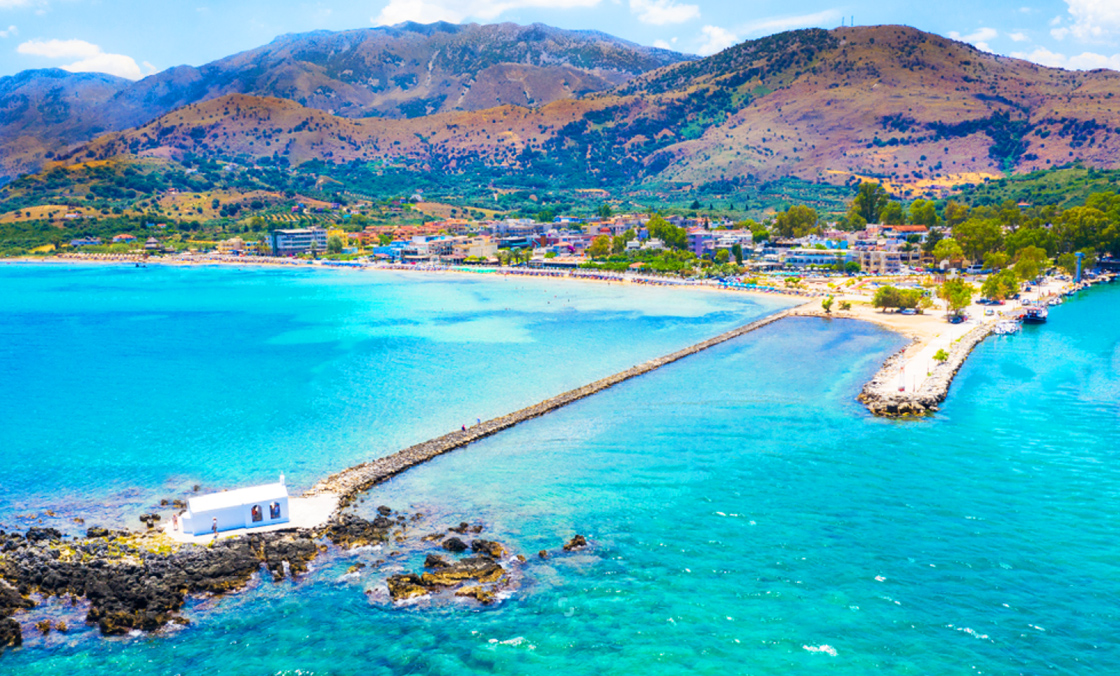
Kournas Lake
The Lake of Kournas is the largest natural lake in Crete and is located in a magnificent landscape, between the western slopes of the White Mountains and the fertile plain of Georgioupoli. It is located very close to the village of Kournas, 2.5 km south of the beach of Georgioupoli. In scientific terms, the lake is created by the accumulation of underground water that descends from the White Mountains and emerges from the spring Amati or Mati, which in summer comes to the surface, while in winter it is below the surface of the lake. There is a second source that feeds it, but it is below the surface of the water.
Lake Kourna is one of the favorite destinations for visitors to the island, as well as locals. It is an ideal place for relaxing and for a walk. In summer, a walk around the lake, with its turquoise waters, usually takes less than an hour. On one side of the lake there are cafes and taverns overlooking the lake and next to the cafes, in the summer, when the waters recede, small sandy beaches are formed where visitors can swim. There are also several pedal boats for rent for a ride on the lake. The pedal boat ride is an ideal option for the afternoon, as the colors of the water are wonderful and the calmness of the lake is enchanting.

Falasarna beach
The enchanting beach of Falasarna is located 59 km west of Chania and 17 km west of Kissamos, in the western part of the Gramvousa Peninsula. At the northern end of the beach are the ruins of the Greco-Roman city of Falasarna. Falasarna is one of the most famous beaches in Greece, as it has been awarded in the past as the best beach in Crete and one of the 10 best beaches in Europe. The sand is light in color, giving the water a tropical color. Indeed, if you are lucky and come on a day when the wind is not blowing from the west, then you will be enchanted by the sea and its turquoise waters.

Further north, next to the archaeological site, there is a small bay facing south. It has pebbles and the bottom is rocky. It is a good choice when the wind blows from the west and for isolation. South of Pachia Ammos, in Livadi, there is a long beach that has a sandy shore and a rocky bottom. It is a very good choice for mask lovers, as the bottom of the central beach is sandy. The area around Falasarna is enchanting and has been included in the Natura protected areas. If you have time and are looking for something romantic, you can wait for the sunset, which is considered the best in Crete.

Kissamos town ( Kasteli Kissamou )
Kissamos (or Kastelli) is a modern seaside town located 36km west of Chania and has a population of approximately 5,000 inhabitants. A comparative advantage for the town of Kissamos is that it has preserved its picturesque character and the touristic development it has received has not altered it much. So far from impersonal mass tourism, the visitor to Kissamos will have the opportunity to spend his holidays among the locals and get to know their customs and traditions through a series of rich cultural events organized during the tourist season. The beach of Teloneio is special, where along a pedestrian street next to the sea you will find a collection of café-bars and restaurants open from morning until late at night. The Archaeological Museum of Kissamos is located in the central square of Stratigou Tzanakakis. It is a preserved building with modern spaces that houses remarkable finds of the area from the Roman Hellenistic times.
Skalidi Street is particularly picturesque, with its small shops and cafes, and has been the old center of the town, the old market until today. Also, in the summer, excursion boats depart daily from the port to the island of Gramvousa and the lagoon of Balos.

Aradaina Gorge
Aradaina is the deepest and one of the steepest gorges in the Prefecture of Chania. With a height of walls exceeding 150m, the gorge is ideal, not only for hiking but also for bunjee jumping from the Aradaina bridge. To reach the usual entrance of the gorge from Chora Sfakion, you go up the paved road to the mountain village of Anopoli (12 km long). After another 3.5 km you reach the ruined village of Aradaina (altitude 520) which is built on the edge of the gorge. In the village of Aradaina, you will find the metal bridge which is the highest in Greece (height 138m) and the second highest bridge for bungee jumping in Europe. Finally, we would like it to be noted that the enchanting route through the canyon until its exit at Marmara beach is an unforgettable experience for anyone who attempts to descend the canyon.
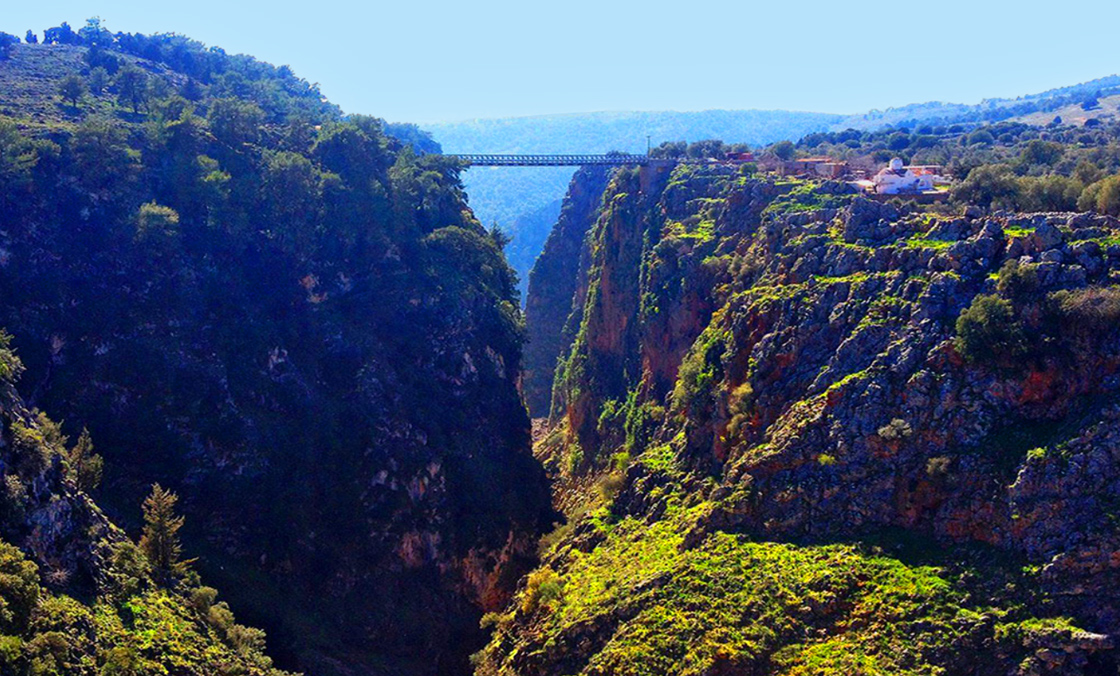
Imbros Gorge
The gorge of Imbros or Imvrou is located near Chora Sfakion and is one of the most popular gorges in Crete. The scenery is beautiful and the relative ease of descent makes Imbros popular with visitors to the island. The length of the canyon is 11 kilometers and the route takes 3-4 hours. The route starts from the small village of Imbro, at an altitude of 700 meters. We follow the sign for Faranghi and soon we arrive at the ticket office. Initially the course is downhill and the side walls are relatively low.
But during the descent the canyon narrows continuously, the walls rise higher and the landscape becomes more impressive. Soon on the sides of the canyon we see various caves. Rent one of our cars and drivr to Chora Sfakion and Imbro and from there you have to walk 1.5 kilometers outside from Komitades on the main road to Sfakia. You could also walk from here to Chora Sfakion, along the main road (5 km). There are also taxis from the end of the gorge and from the village of Komitades to take you back in the place, where you have had parked your car.
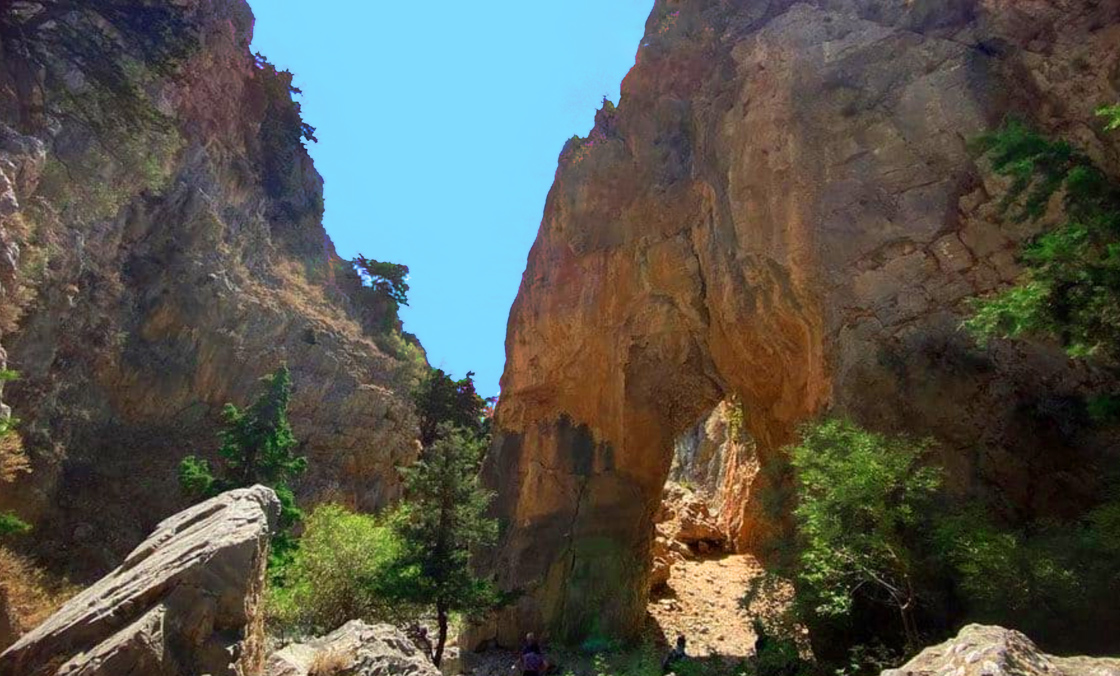
Chora Sfakion (Sfakia) Village
Chora Sfakion is on the south coast of Crete. It is located near the end of the Imbros gorge, 74 km south of Chania. It is a small village that has two small ports, where the ships of the line to Agia Roumeli moor, from which the hikers of the Samaria gorge arrive in the summer to take the return bus. The same boat also passes by the picturesque Loutro and continues to the island of Gavdos, Paleochora and Sougia. There is a quiet beach, called Vrysi, immediately west of the village, and many pebbly beaches around the area. The village offers a variety of tourist accommodation: rooms, studios and apartments.
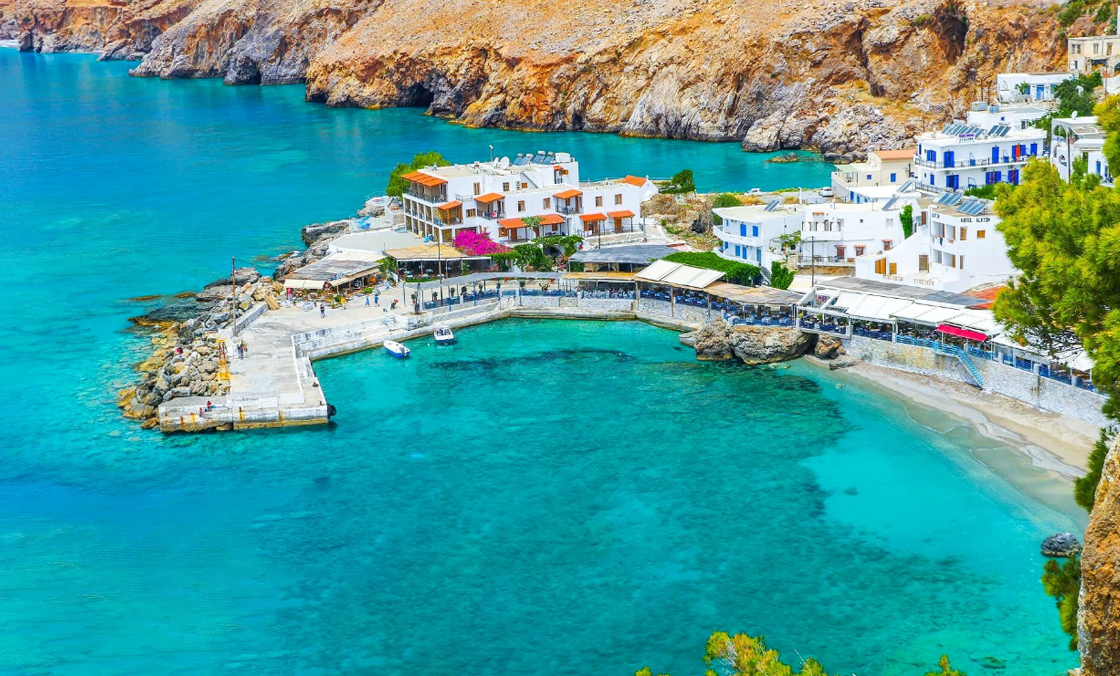
Loutro Village
Loutro is a small fishing village located approximately 71 kilometers south of Chania. You can stay in Loutro and use it as a base to explore the surrounding beaches, either by taxi (boat), canoe or on foot. You can visit the enchanting beach of Glyka Nera east of the village. Additionally, you can canoe or walk to the nearby unorganized pebbly beaches of Timios Stavros and Pervolaki located 1km east of Loutros, just before Glyka Nera. Loutro is a place for those who want something different and calm on their vacation.
A small picturesque fishing village in south-west Crete, which has not yet been greatly affected by mass tourism. You won't find big hotels with swimming pools, crowded streets, lavish restaurants and worldly beaches, but also no cars! Access is only possible by boat or, if you wish, on foot (1.5-hour hike on a path from Chora Sfakion or on the path from Anopoli). There are daily ferry routes to and from Chora Sfakion.
Also, here in Loutro you will find the rest and peace you are looking for and if you want, there are many things to do. If you are in Loutro, prefer walking in the picturesque, unspoilt countryside with its mountains, valleys and gorges. Nearby, see the two old villages of Loutros and Kastela and admire the few scattered native palm trees.
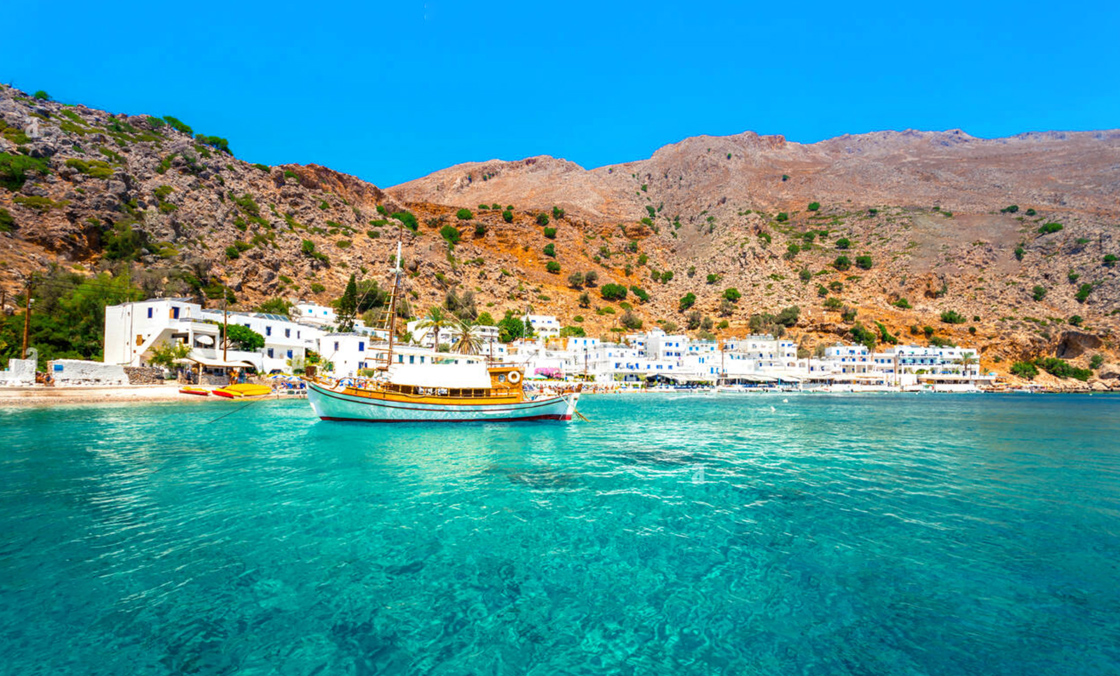
Frangokastello beach
Frangokastello (meaning the castle of the Franks) is one of the most famous beaches of Crete. It is located 13 km east of Chora Sfakion, 80 km south of Chania, in a small plain in the southeast of the White Mountains. The central beach of Frangokastello is truly enchanting with sand and shallow waters, ideal for families with children.
It is quite organized and generally has a lot of people. The only problem you may encounter is the frequent annoying wind, which carries the sand with force. In case it's too windy and you can't stand it, you can move to the beaches west of Chora Sfakion, where it's usually much calmer. To the west of the main beach is the long beach of Vatalos, which is sandy and has pebbles and rocks in places, ideal for a mask. In the area of Vatalos, a great wetland with fresh water ponds forms in the winter. Walking east of the main beach for 10', you will find the amazing beach of Orthi Ammos with the large dunes that descend to the sea.

